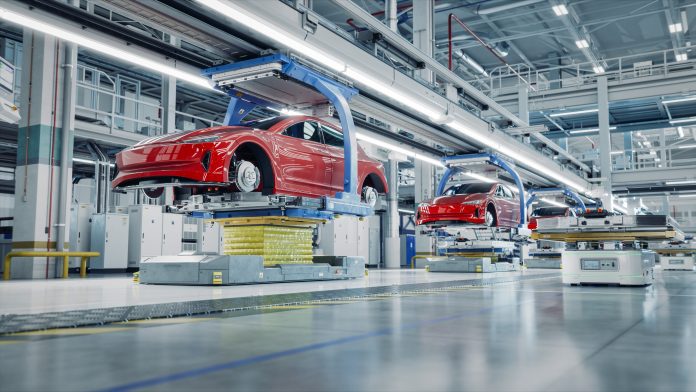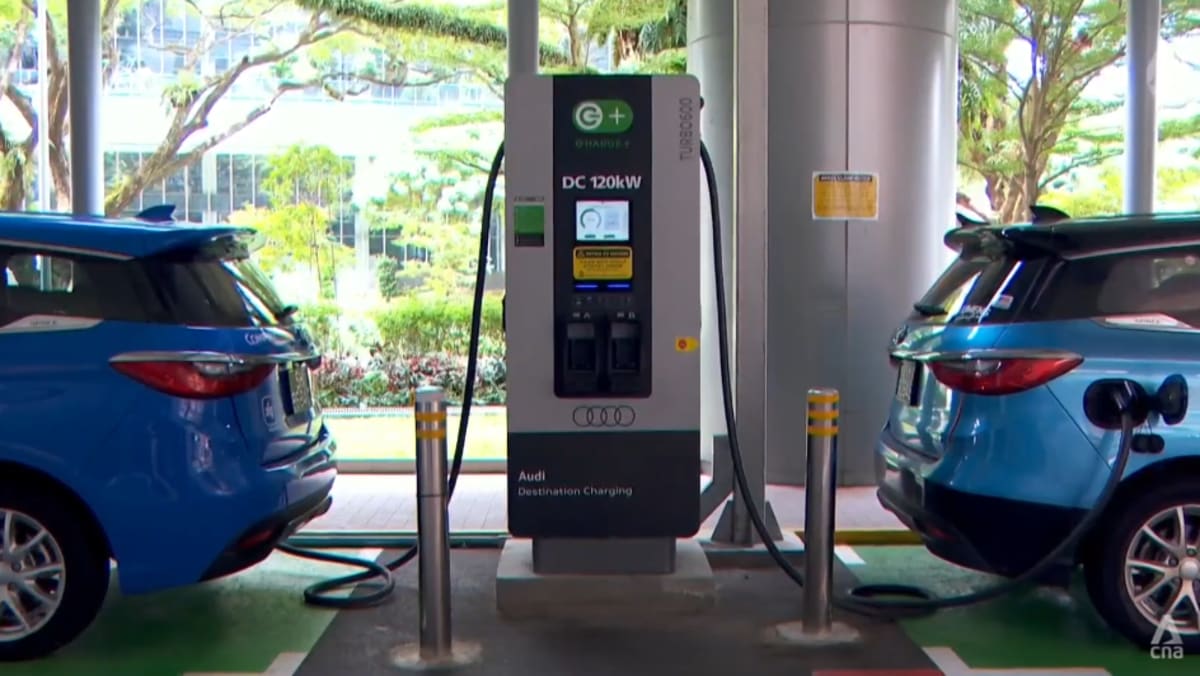Singapore’s SGD 2 Billion EV Roadmap: How to Profit from the Government’s Grants & Tax Rebates
Singapore is charging ahead with its electric vehicle (EV) revolution, backed by a SGD 2 billion investment to transform its transportation system into a sustainable, eco-friendly network.
This roadmap, part of the Singapore Green Plan 2030, aims for 100% cleaner energy vehicles by 2040, reducing carbon emissions by 1.5 to 2 million tons—about 4% of national emissions.
The government’s strategy includes expanding charging infrastructure, offering financial incentives, and setting regulations to support EV adoption, making it a promising opportunity for individuals and businesses alike.
What is Singapore’s EV Roadmap
Singapore’s EV roadmap is a strategic initiative to transition from internal combustion engine (ICE) vehicles to EVs, driven by environmental concerns and sustainability goals. Key components include:
- Infrastructure Development: The government aims to deploy 60,000 EV charging points by 2030, with 40,000 in public car parks and 20,000 in private premises, ensuring every Housing Development Board (HDB) town is EV-ready by 2025. As of early 2025, over 6,200 charging points are installed, with more than half publicly accessible, as reported by Rest of World EV Challenge.
- Incentives for EV Adoption: Financial incentives include grants and tax rebates to lower ownership costs, detailed in subsequent sections.
- Policies and Regulations: The Land Transport Authority (LTA) leads efforts, enforcing standards under the Electric Vehicles Charging Act (EVCA), which mandates EV charging provisions in new developments, as outlined at LTA Transitioning to EVs.
The rationale is clear: EVs emit half the CO2 of ICE vehicles, aligning with Singapore’s net-zero goals. Milestones include HDB EV-readiness by 2025, 60,000 chargers by 2030, and full cleaner energy vehicle adoption by 2040, as per LTA Electric Vehicles.
Breakdown of Grants and Tax Rebates
The government offers several incentives to make EV adoption financially attractive, with details as follows:
| Incentive | Details |
|---|---|
| EV Early Adopter Incentive (EEAI) | - Provides a 45% rebate on the Additional Registration Fee (ARF), capped at SGD 15,000. - Applicable to electric cars and taxis registered from January 1, 2021, to December 31, 2025. - The ARF floor has been reduced to SGD 0 for electric cars and taxis registered from January 1, 2022, to December 31, 2025, to support mass-market adoption. |
| Vehicular Emissions Scheme (VES) | - SGD 25,000 rebate for Band A1 electric cars. - For vehicles registered between January 1, 2025, and December 31, 2025 - SGD 2,500 rebate for Band A2 hybrids (effective 2025). |
| Road Tax Adjustments | - Lower road tax for EVs due to reduced emissions, calculated on power output, enhancing long-term savings. |
Combined Savings Example:
For a 2024 electric car purchase, combining EEAI (SGD 15,000) and VES (SGD 25,000) can yield up to SGD 40,000 in rebates, significantly reducing upfront costs.
The application process involves purchasing and registering within the timeframe, with rebates applied automatically at registration, subject to eligibility checks.
This table illustrates potential savings, emphasising the need to verify current rates at LTA EVs.
| Incentive | Amount | Eligibility Period | Notes |
|---|---|---|---|
| EEAI | 45% ARF, cap SGD 15,000 | 2024-2025 | ARF floor SGD 0 for EVs |
| VES (Band A1) | SGD 25,000 | New vehicle registration | Most electric cars qualify |
| VES (Band A2) | SGD 2,500 | Effective 2025 | Applies to hybrids |
Profiting as an Individual
Individuals can maximise benefits by strategically choosing and managing EV ownership:
- Choosing the Right EV: Select models qualifying for EEAI and VES Band A1, such as popular options like BYD e6 or MG ZS EV, ensuring cost-effectiveness post-rebates. Consider range and charging needs, with home charging being cost-effective if feasible.
- Total Cost of Ownership: Includes purchase price (post-rebates), lower road tax, charging costs (based on electricity rates), and reduced maintenance due to fewer moving parts. For example, charging at home can be cheaper than public stations.
- Navigating Application: Purchase and register within 2024–2025 for EEAI, ensuring documentation like invoices and certificates are ready. Rebates are deducted at registration, simplifying the process.
- Addressing Concerns: Range anxiety is mitigated by improving battery technology and expanding chargers, with real-time availability via MyTransport.SG app (LTA Transitioning to EVs). Resale value is stabilising as the market grows, as per Sgcarmart EV Incentives.
- Electric Vehicle Common Charger Grant (ECCG): The grant has been extended to support EV charger installations in non-landed private residences (NLPRs), such as condominiums. Key details include:
| Key Information | Details |
|---|---|
| Grant Name | Electric Vehicle Common Charger Grant (ECCG) |
| Duration | Available until December 31, 2026, or until 3,500 chargers are co-funded (previously 2,000). |
| Co-funding | 50% of installation costs. For the additional 1,500 chargers, the cap is SGD 3,000 (previously SGD 4,000). |
| Eligibility | NLPRs can apply for co-funding for up to 1% of total parking lots (e.g., 1 charger for 100-lot condominium). |
Note: Step-by-step guidance on buying EVs include researching models, calculating costs, applying for rebates, and planning charging, ensuring a financially sound transition.

Profiting as a Business
Businesses can tap into the EV sector for profit through various avenues:
- Installing and Operating Charging Stations: With 40,000 public chargers planned by 2030, businesses can invest in operations, generating revenue from usage fees. The EV Common Charger Grant supports private installations.
- Providing EV-Related Services: Demand for maintenance, repairs, and consultancy is rising, with training programs for technicians offering additional revenue streams, as noted at ChargeWhere.SG Incentives.
- Developing Technologies: R&D in charging, battery management, and smart grids presents innovation opportunities, potentially partnering with manufacturers, as per LTA Electric Vehicles.
- Fleet Electrification: Electrifying fleets reduce fuel and maintenance costs, supported by enhanced depreciation allowances and potential Green Vehicle Rebates, enhancing CSR.
Return on investment is promising, with early adopters gaining market share, especially in charging operations and fleet management, as the market expands.

Infrastructure and Charging Solutions
Charging infrastructure is critical for EV adoption, with current and future plans shaping opportunities:
| Aspect | Details |
|---|---|
| Current State | Over 6,200 chargers installed by early 2025, with 700 HDB car parks equipped, half publicly accessible, as per Rest of World EV Challenge. |
| Government Initiatives | Targets 60,000 chargers by 2030, with HDB EV-readiness by 2025, supported by the EV Common Charger Grant, as detailed at MOT Green Transport. |
| Charging Solutions | Include public stations (fast chargers at malls, one-hour full charge), home charging (convenient, grant-supported), and workplace options, addressing diverse needs, as per LTA Transitioning to EVs. |
| Challenges and Opportunities | Space constraints in land-scarce Singapore are addressed by integrating chargers into existing infrastructure, with technological advancements like faster charging offering growth, as noted at ZDNET EV Charging. |
| Private Companies’ Role | They install, maintain, and innovate, developing apps for charger location, and enhancing user experience, as per LTA Electric Vehicles. |
This infrastructure expansion is a cornerstone for EV adoption, creating business and investment opportunities.

Future Outlook and Investment Opportunities
The EV market’s long-term prospects are bright, with trends and investments shaping the future:
- Long-Term Prospects: Phasing out ICE vehicles by 2040, with 60,000 chargers by 2030, will drive adoption, supported by technological advancements.
- Future Developments: Autonomous EVs, energy storage roles, and green energy integration will create new models like robotaxis and grid stabilisation, as per IEA EV Roadmap.
- Investment Opportunities: Include charging station operations, fleet management, battery recycling, smart grids, and EV-ready real estate, with Singapore’s hub status attracting capital, as noted at Bloomberg IFC Commitments.
- Technological Impact: Longer ranges, faster charging, and connected vehicles will enhance user experience.
- Global Position: Singapore’s regulatory framework and infrastructure make it a green tech leader in Asia, as per MOT Green Transport.
Investors can leverage these trends for long-term gains, aligning with sustainability goals.
Bottom Line
Singapore’s SGD 2 billion EV roadmap offers significant profit potential through grants like EEAI (SGD 40,000 cap), VES (SGD 25,000 for Band A1), and business incentives like charger grants.
Individuals can save up to SGD 3,000 under the co-funding part of ECCG, while businesses can thrive in charging, services, and fleet electrification. With 60,000 chargers planned by 2030 and a 2040 cleaner energy goal, the future is bright.
Explore options at LTA EVs and take action to join this green revolution.
Key Citations
- LTA Transitioning to EVs
- Understand the EV Roadmap in Singapore Lim Kim Hai Electric
- Electric car buyers to continue to get up to $40,000 in rebates in 2025 Straits Times
- Singapore’s EV challenge High prices and high-rises Rest of World
- Singapore Commits US$500 Million in Matching Concessional Funding to Support Decarbonisation in Asia MAS
- LTA Electric Vehicles
- MOT Singapore Gain new perspectives on land, sea & air transport
- EV and EV Charging Incentives in Singapore A Complete Guide Wallbox
- MoneySmart How Much Do Electric Cars Cost in Singapore 2024
- Sgcarmart What’s next for electric vehicle incentives in Singapore
- ChargeWhere.SG Incentives and Rebates for Purchasing and Maintaining an Electric Vehicle in Singapore
- DollarsAndSense EV Early Adopter Incentive EEAI VES PARF and Road Tax How Much Can You Really Save If You Buy An Electric Car In Singapore Today
- ZDNET Singapore looks to power up electric vehicle charging network
- LTA Our EV Vision
- IEA Electric Vehicle Roadmap Policies
- Bloomberg IFC Sees Singapore Commitments Remaining Near Record $2 Billion
- Singsaver Guide To The Cheapest Electric Cars in Singapore 2025
Let us know what you think about this topic, and what do you want to hear next.
You can now be our community contributor and make a pitch to have your favourite personality be on our show.
Join our community group and drop us your insights on this topic.

-3.png?width=50&name=Square%20(2)-3.png)










Let us know what you think of this post